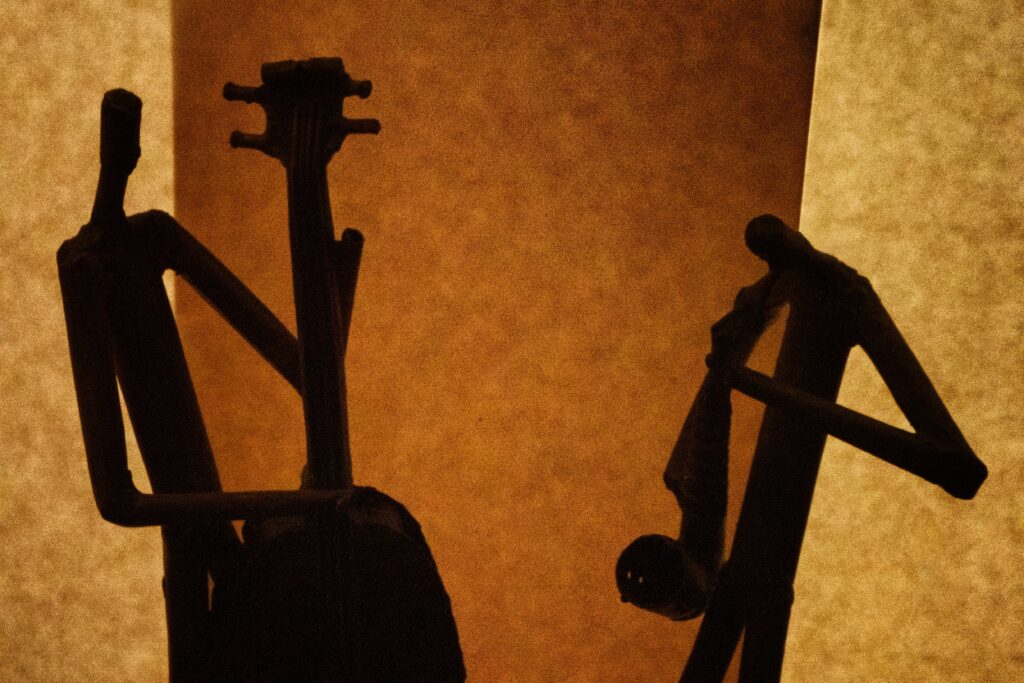
Lighten up …
Nicole Law gets into jazz music and picks up a few valuable life lessons along the way.
I am a planner by nature. You will find me every Sunday pencilling in dates of the week’s important meetings, birthdays and anniversaries in my old-fashioned diary. You will find me scrolling my phone for the timing of the next bus or train. You will find me scheduling episodes on the podcast a few months in advance.
The downside might be that I lack vital spontaneity when it comes to small decisions, preferring to stick to tried-and-tested routes and proven formulas. Even my choices of lunch at work hardly vary!
I was in for a surprise, therefore, when I found myself at a swing dance class. The instructor took us through some basic figures in the dance, instilled some sense of rhythm and all seemed well and good. There seemed to be a series of steps to follow, a direction to travel in … This was the order and structure I felt comfortable with. And then he turned on the stereo.
The music that followed knocked me for six. It wasn’t regular, it had a lilting quality, there was an air of spontaneity that I could not quite describe.
The instructor laughed and quipped, “It appears Nicole has had her first experience of jazz.”

As Wynton Marsalis said: “In jazz, improvisation isn’t a matter of just making any ol’ thing up. Jazz, like any language, has its own grammar and vocabulary. There’s no right or wrong, just some choices that are better than others.”
Where most of us may be more familiar with composed music, jazz possesses the unique quality of both set composition and the secret ingredient known as improvisation. Some musicians point out that to play good jazz music requires both spontaneous creativity and intentional conviction. I found this intriguing as I danced to old jazz tunes in dance class and while social dancing.
I thought I knew where the song was going, but not how, and then I would be surprised by a turn of phrase, a change in tempo or an unexpected saxophone solo.
Jazz music lends itself well to a dance form which relies less on a choreographed routine and more on risk-loving improvisation on the floor to extemporised chords. As I learned more about the dance and the music, I found myself relishing this improvisation and the thrill of not knowing what was the exact step my dance partner wished to execute next but instead leaning into the uncertainty.
Just as the dance was creating itself on the spot, with no pre-planned tuck turns or aerial steps, the music was also being created as I heard it.
I loved listening to one of my favourite swing quartets at a live event where the musicians each knew the tune and role of their instrument, yet all took turns to allow the guitar, piano, bass and drums to create improvised solo variations. The structure of the music is flexible such that each instrument can venture a solo segment in any direction depending on the inspiration of the moment.
That made me think about my own approach to life, and how I always sought to ‘compose’ a clear picture of any task before I started it. This stems from a fear of taking risks when I am not sure what the outcome will be.
But jazz music does precisely the opposite: it excites us for the simple reason that we do not know which direction the music is going in and yet there is something exhilarating about the unknown.

Life in itself is unpredictable and flexibility is key. I have myself experienced frustration at my own carefully-laid plans (yes, those five year ones) being overturned by the idiosyncrasies of each day. Perhaps I had become too reliant on the plan, instead of letting life happen, as it should, sometimes in a very unexpected way.
As in jazz music, I learned that it was essential to take time to listen and respond appropriately to those unexpected events which meet us on our way. In jazz, this is called the ‘call and response’ structure. Too often I am guilty of jumping in and responding to situations instead of listening first before formulating a response.
The beauty of improvisation in jazz is also to sense the mood and to create new music on the spot. This reminded me very much about how improvisation requires ‘leaning in’ to what we are experiencing, reading the situation and not being afraid to venture forth, whether it means taking steps we are afraid of or engaging in conversations we find difficult.
There is a liberation that comes with releasing the fear of failure and trusting the process of getting there, no matter how risky!

Just as jazz musicians are sensitive to the shifting tones within music and respond with an improvised solo, so we can also venture forth and realise that there is also much joy in charting a new path ahead, sometimes on our own.
In recent years I have grown to love this improvisation in jazz and gradually learned to let go of my dependence on plans and certainty. It’s amazing how jazz has become my teacher in more ways than one.
From it I have learned that beautiful things can come about when we dare to take a risk and go with the flow. As Nat Wolff puts it: “Jazz is smooth and cool. Jazz is rage. Jazz flows like water. Jazz never seems to begin or end. Jazz isn’t methodical, but jazz isn’t messy either. Jazz is a conversation, a give and take. Jazz is the connection and communication between musicians. Jazz is abandon…”
Like what you’ve read? Consider supporting the work of Adamah by making a donation and help us keep exploring life’s big (and not so big) issues!
